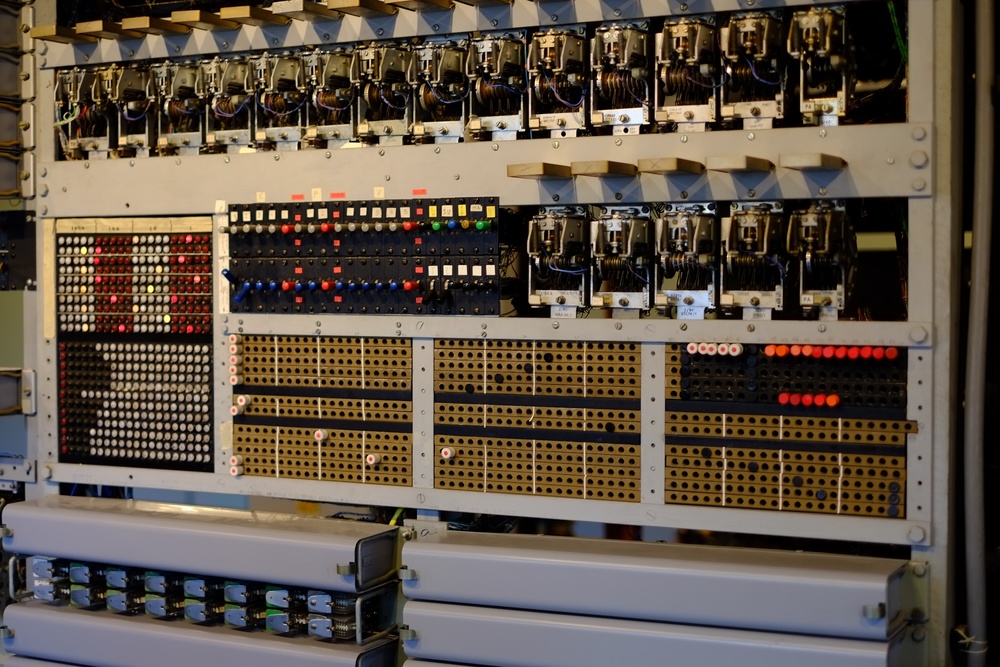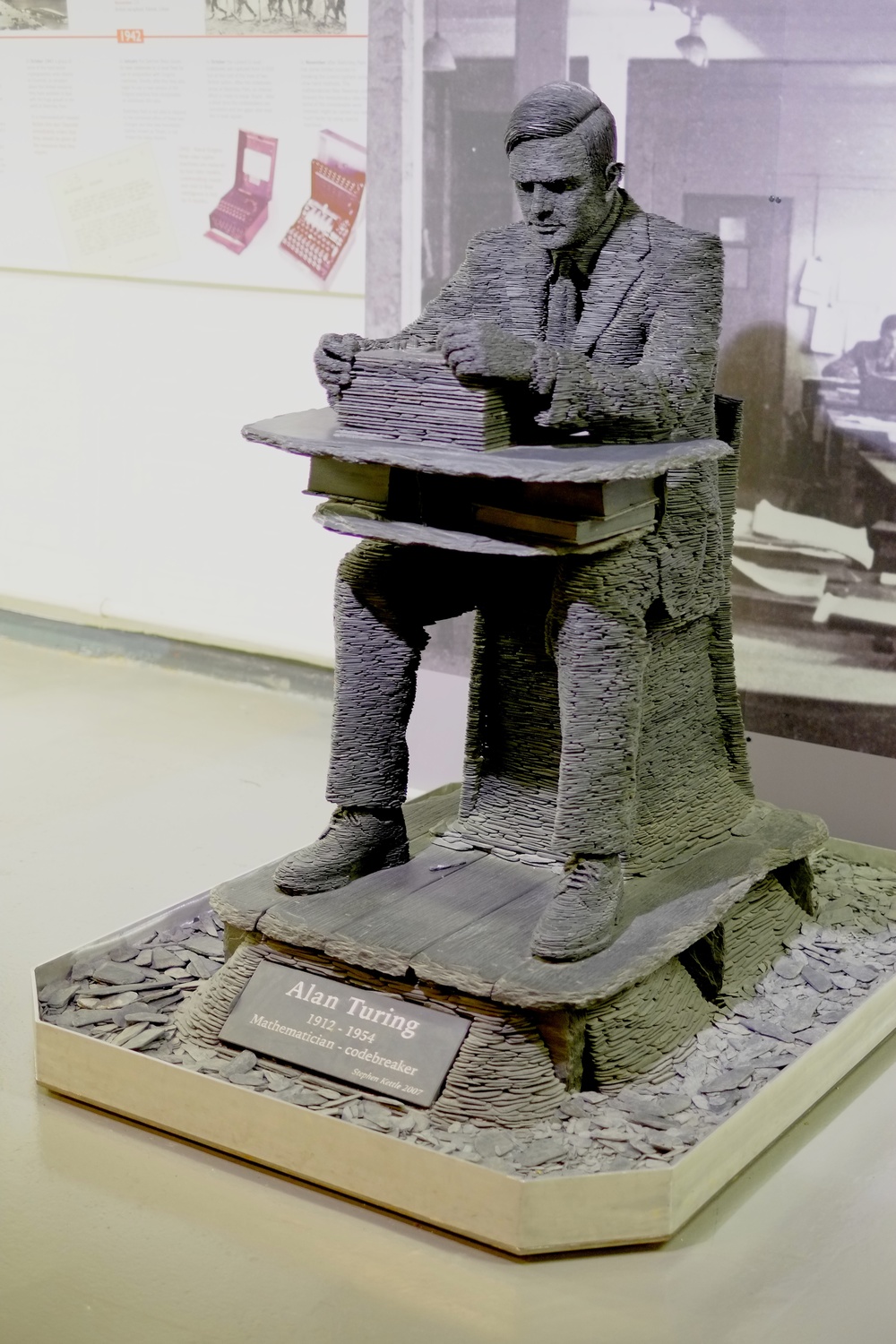Today I drove north from London to Bletchley to visit the revamped National Museum of Computing. I’ve been a frequent visit to Bletchley Park in the past and the codebreaking HQ is always an entertaining day out. Now, the fairly basic Museum of Computing has been expanded and occupies a wartime hut complex adjacent to the main Bletchley mansion.
Apart from a wide range of nostalgic exhibits insights into personal computing over the past thirty years, the museum is home to two of the world’s most significant early computers, both now in working order and humming away for the entertainment of visitors.
Most impressive, without a doubt, is the completely rebuilt Colossus, the world’s first electronic computer designed by Tommy Flowers of the Post Office, which was then responsible for the national telephone network.
From 1944 Colossus played a crucial part in deciphering enemy signals, completely without the knowledge of the Germans or Japanese, and is credited with having shortened the war by several months, if not years. Flowers had earlier collaborated with Alan Turing and had based his design on the specific requirements for code breaking and on the experience of the earlier Heath Robinson which was the first attempt to automate the laborious process of deciphering messages.
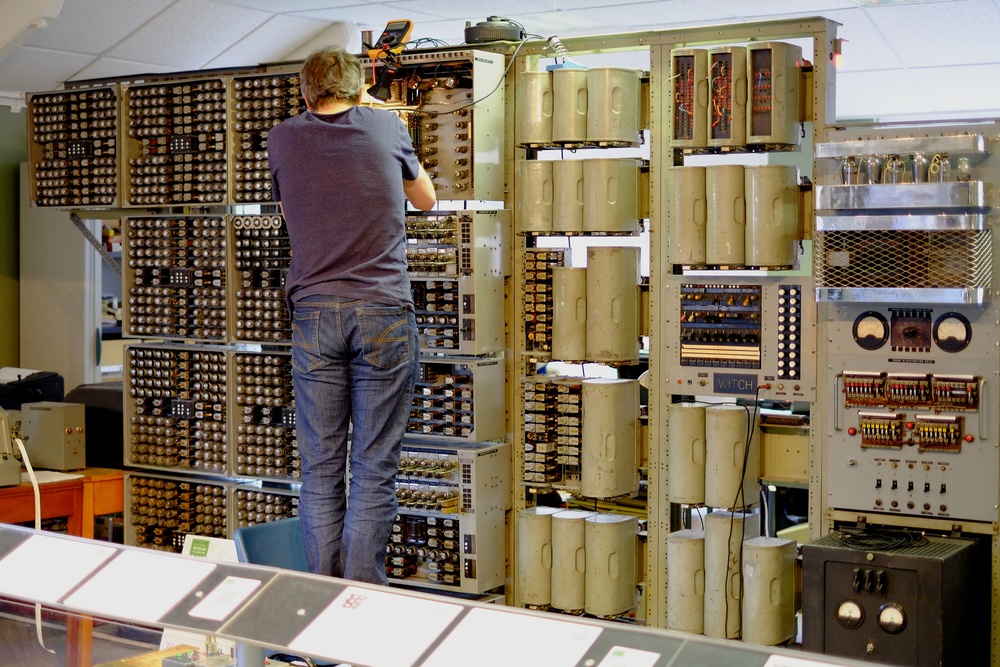
Above: The Harwell Dekatron, the world’s oldest working digital computer, being rebooted at the museum. The Dekatron owes its charmed survival to the fact that it was donated to a university after its working life. Built in 1951, it was one of only a dozen working computers in the world. After retirement in 1957 the Dekatron went to the Wolverhampton and Staffordshire Technical College (now Wolverhampton University) and was named WITCH, standing for Wolverhampton Instrument for Teaching Computing from Harwell.
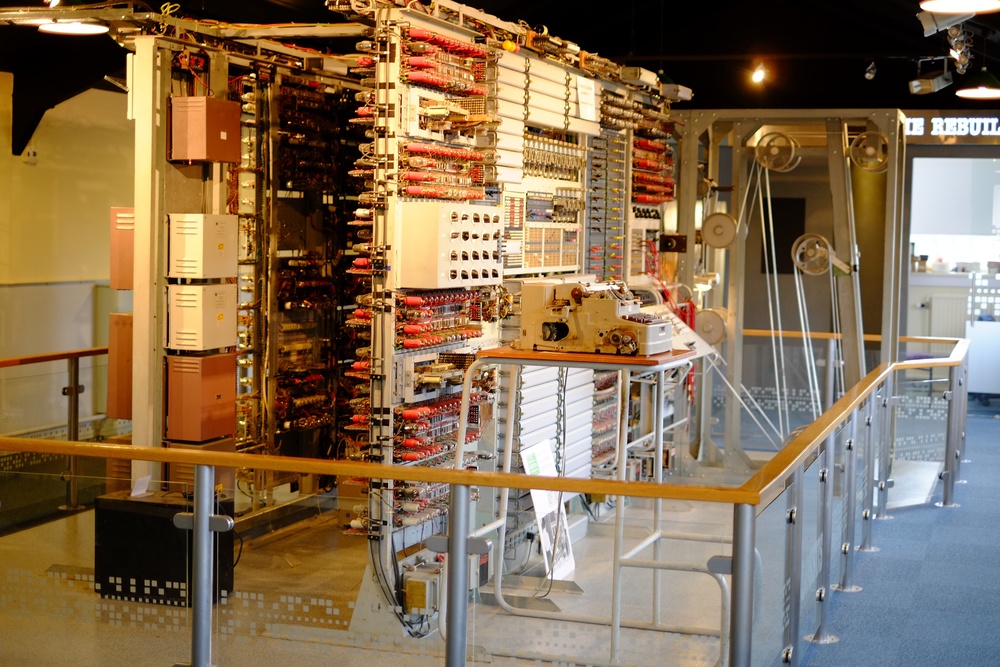
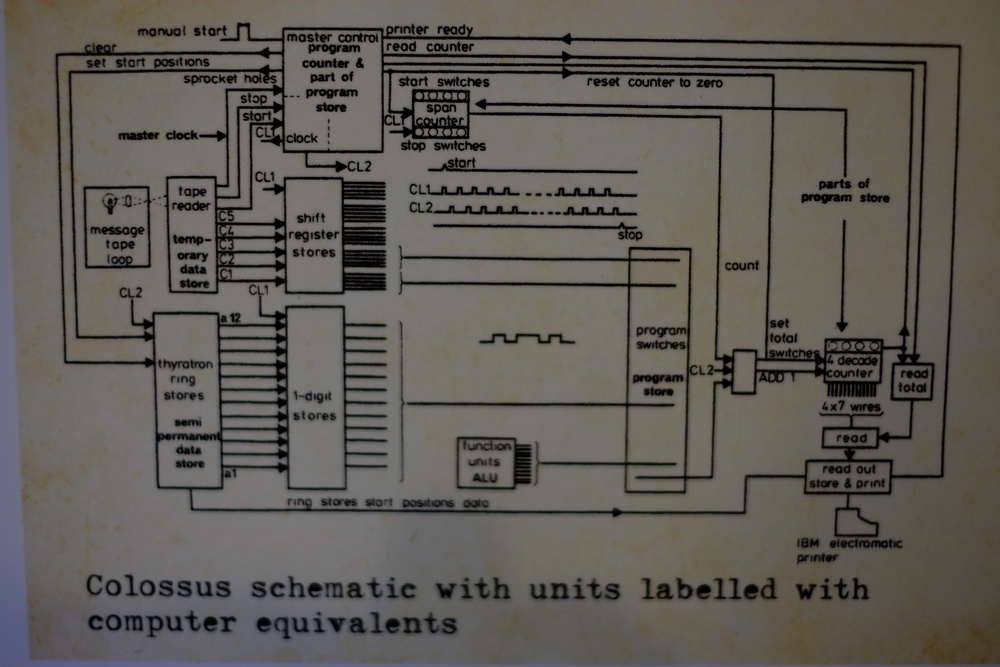
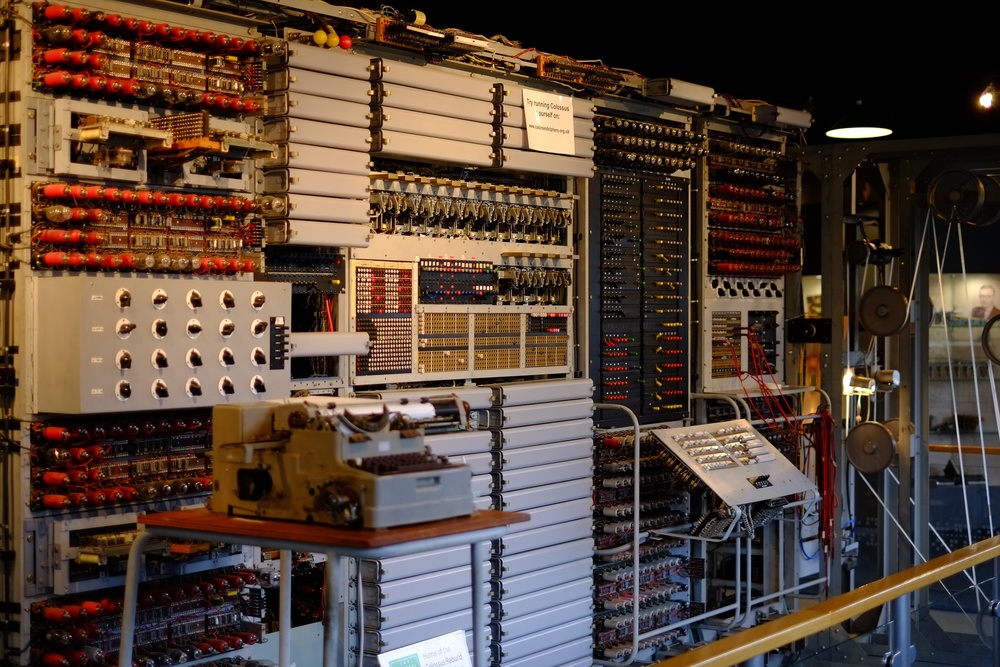

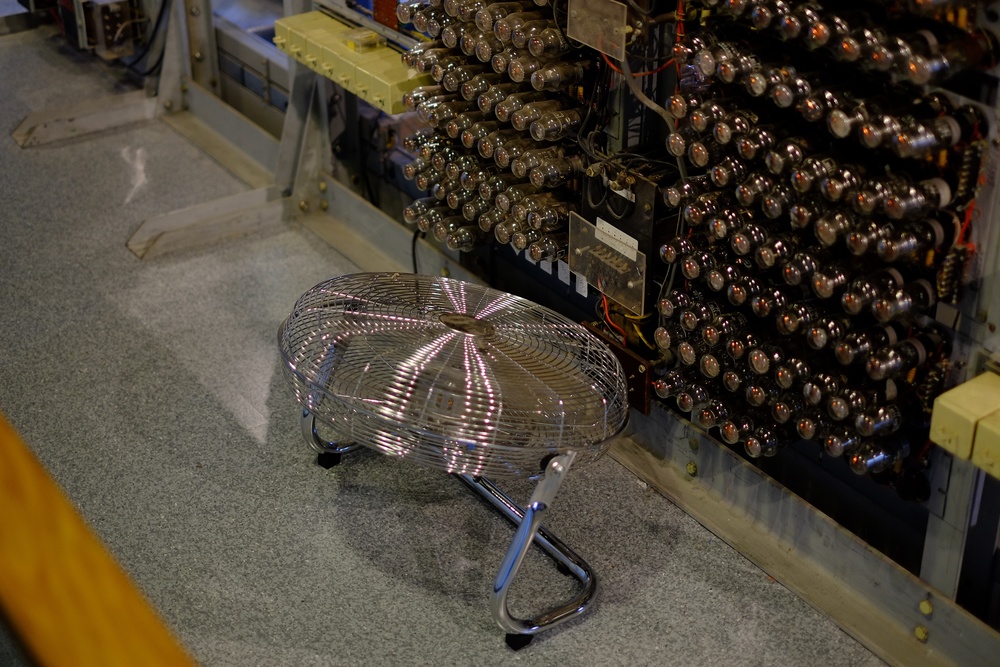
Above: This replica of the world’s first electronic digital computer, the Colossus, has been completely recreated by enthusiasts at Bletchley. The Colossus Mark I was shown working in 1943 and was operating at Bletchley Park in February 1944. The Colossus Mark 2, on which this replica is based, first worked in June 1944, just in time for the Normandy landings. Ten computers were in use by the end of the war. Note the handy cooling fan


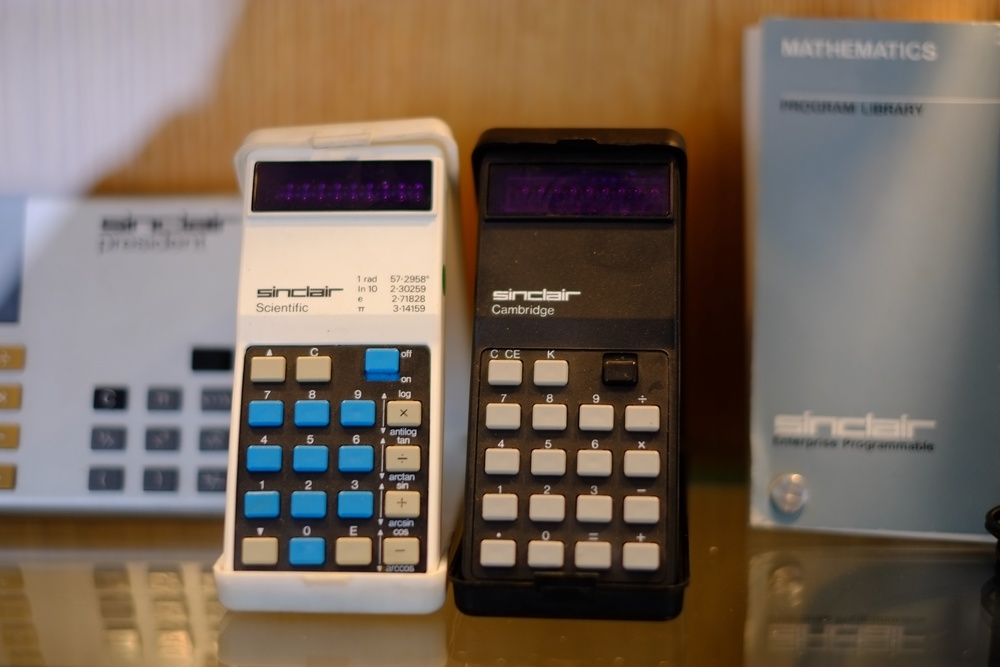
Above, clockwise: Early portable computing; Steve Jobs’ inspired but doomed NExT; the iconic IBM PC XT from 1983; a massive 8MB disk; the world’s first miniature electronic calculator, the Sinclair; the man himself, Alan Turing.
by Mike Evans, 23 February 2013

